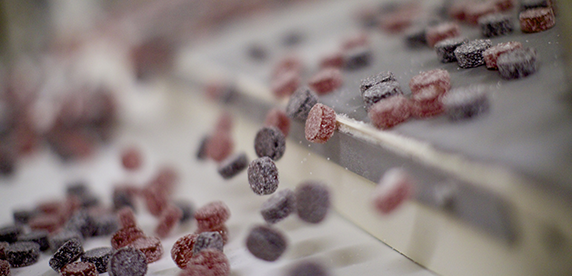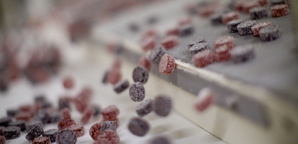Dailycsr.com – 14 July 2015 – The practice of turning waste into useful material can be traced back to a few centuries, whereby the a “confectionery factory”, situated on the suburbs of Newcastle Upon Tyne, took to “centuries-old technique” of converting waste and breathing life into them.
The confectionery factory belongs to none other than the company of Nestlé. Situated at Fawdon Nestlé makes use of a “new anaerobic digestion system” which turns various confectionery wastes, generated during the process of manufacturing, like sugar and chocolate into clean water and renewable energy.
The company collects all the quality check rejected sweets and chocolates, “not suitable for sale”, along with materials that beyond the stage of reprocessing and various residues from the waste like “starch and sugar among others. These items are then “broken down” into tiny bits, whereby creating an amalgam of small pieces which is “partially dissolved” by introducing liquid waste generated from the very site of manufacture through various “cleaning process”, thus one arrives at a “chocolate soup”.
The said soup containing the waste products goes into “an airtight tank” wherein the bacteria begin to break down the “biodegradable material”. The said natural process is termed as anaerobic digestion. The biodegradable materials include food, which in the absence of oxygen gets converted “into useful by-products” which help to provide a portion of energy need at the manufacturing site.
As mentioned earlier, the anaerobic digestion has been prevalent in industrial and agricultural practices for “centuries”. However, the uniqueness of Fawdon’s WtE plant lies in the fact that it can “handle a high volume of solid and liquid waste within a short time”. Nestlé Ireland and U.K’s sustainability head, Inder Poonaji states that:
The confectionery factory belongs to none other than the company of Nestlé. Situated at Fawdon Nestlé makes use of a “new anaerobic digestion system” which turns various confectionery wastes, generated during the process of manufacturing, like sugar and chocolate into clean water and renewable energy.
The company collects all the quality check rejected sweets and chocolates, “not suitable for sale”, along with materials that beyond the stage of reprocessing and various residues from the waste like “starch and sugar among others. These items are then “broken down” into tiny bits, whereby creating an amalgam of small pieces which is “partially dissolved” by introducing liquid waste generated from the very site of manufacture through various “cleaning process”, thus one arrives at a “chocolate soup”.
The said soup containing the waste products goes into “an airtight tank” wherein the bacteria begin to break down the “biodegradable material”. The said natural process is termed as anaerobic digestion. The biodegradable materials include food, which in the absence of oxygen gets converted “into useful by-products” which help to provide a portion of energy need at the manufacturing site.
As mentioned earlier, the anaerobic digestion has been prevalent in industrial and agricultural practices for “centuries”. However, the uniqueness of Fawdon’s WtE plant lies in the fact that it can “handle a high volume of solid and liquid waste within a short time”. Nestlé Ireland and U.K’s sustainability head, Inder Poonaji states that:
“The system allows us to add tougher residues like starch-based compounds to the process, along with reject product and other materials. As long as the material is biodegradable, the anaerobic conversion process can take place. The waste we are converting here would otherwise be disposed of externally.”
The main by-product generated from the system is biogas which comprises mostly of CO₂ and methane. At Fawdon, the biogas generated by the waste to energy plant fulfills ten percent of the overall energy requirements by the site, whereby the green house emission rate at Fawdon is reciprocally due to fall by ten percent. Besides providing clean energy, the bacteria also improve the water quality which is being “discharged from the factory”. The annual quantity of water discharged from the factory could fill up forty one Olympic swimming pools.
Recalling the initial stages of this pilot project in anaerobic digestion venture, Inder says:
“There were a lot of elements to consider. Determining which bacteria to use required significant investigation and trialling. We had to begin small-scale before moving forward.”
The bacteria used for this natural process of waste energy conversion grow naturally and converts a daily dose of “four tonnes of solid waste and 200,000 litres of liquid waste”. Consequently, the company of Nestlé was able to achieve “zero waste for disposal status” in all of its 72 factory sites situated all over the world.
References:
http://www.nestle.com/media/newsandfeatures/chocolate-waste-reduction-nestle-factory-fawdon-uk


 Nestlé Arrives At Zero Waste
Nestlé Arrives At Zero Waste





 Companies
Companies